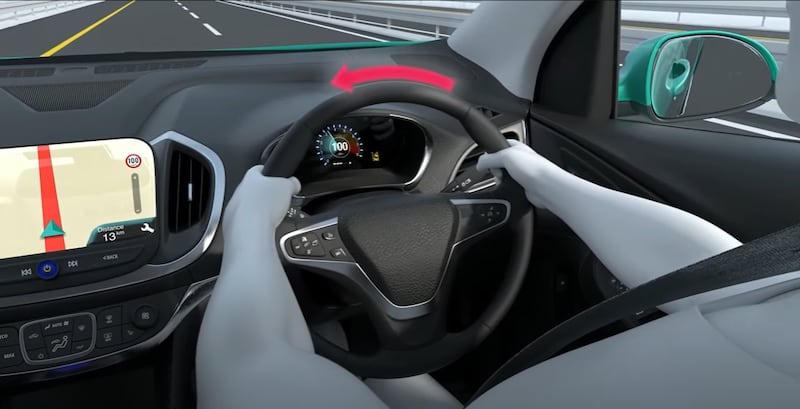Over the past few decades, developments in vehicle safety have greatly helped to reduce road fatalities and serious injuries.
The first General Safety Regulation (EC) No. 661/2009 introduced the mandatory requirement for advanced vehicle systems, such as electronic stability control (ESC) for cars and advanced emergency braking systems (AEBS) for trucks, buses, and coaches. Both these systems have helped to reduce the number of road fatalities and serious injuries.
The second General Safety Regulation (EU) 2019/2144, which applied from 6 July 2022, aims to significantly reduce deaths and serious injuries on EU roads by introducing state-of-the-art safety technologies as standard vehicle equipment.
In 2023, approximately 20,400 people died on roads in the European Union and 185 people lost their lives on Irish roads. These figures have been slowly rising since 2020.
As well as safety measures to protect vehicle occupants, there is a need to protect vulnerable road users, such as cyclists and pedestrians.
As the volume of traffic increases, the safety performance of vehicles needs to be further improved forming an integrated road safety approach and to better protect vulnerable road users.

The European Commission expects that the proposed measures will help save over 25,000 lives and avoid at least 140,000 serious injuries by 2038. This will contribute to Vision Zero, Ireland and the EU’s long-term goal of zero fatalities and serious injuries on the roads by 2050.
The European Commission assessed the feasibility of extending AEBS in trucks and buses to cover new cars and vans. They also assessed the technical and economic feasibility and market maturity of imposing a new requirement to install other advanced safety features. Based on those assessments, the European Commission published a report, Saving Lives: Boosting Car Safety in the EU, where 19 potential regulatory measures were proposed with the aim of further reducing the number of road collisions and road fatalities and injuries.
Advanced vehicle systems have a high potential to greatly reduce the number of fatalities and serious injuries on Irish roads. Examples of technologies that apply to newly manufactured motor vehicles from 7 July 2024 include the following:
- Intelligent speed assistance (ISA) are systems that help the driver to keep within the speed limit by providing dedicated and appropriate feedback, such as a visual warning.
- Alcohol interlock installation facilitation (AIIF) is a standardised interface that allows alcohol interlock devices to be fitted to vehicles.
- Driver drowsiness and attention warning (DDAW) systems are systems that detect how tired the driver is and advises the driver to take a break when required.
- Emergency stop signal (ESS) is a flashing of the vehicle’s rear lighting to warn other road users behind them that the vehicle is braking suddenly.
- Reversing detection (RD) systems are systems comprising of a camera or sensor that alerts the driver if there are objects or people behind the vehicle as it reverses.
- Event data recorders (EDR) are systems with that record and storing critical crash-related data shortly before, during and immediately after a collision.
- Tyre pressure monitoring systems (TPMS) are systems that monitor the air pressure of the vehicle’s tyres and provides feedback in real time to the driver. This technology can prevent incidents caused by under-inflated tyres.
The following safety features will be required for newly manufactured cars and vans from July 2024:
- Advanced emergency braking systems (AEBS) are systems that monitors the road ahead, alerting the driver if a potential collision is about to occur. The system also automatically applies the brakes if the driver fails to brake in an emergency.
- Emergency lane-keeping systems (ELKS) are systems that assist the driver in keeping a safe position within the lane or road boundary, at least when a lane departure occurs or is about to occur and a collision might be imminent.
The following safety features will be required for newly manufactured trucks, buses and coaches from July 2024:
- Blind spot information systems (BSIS) are systems that inform the driver of a possible collision with a cyclist near side.
- Moving off information systems (MOIS) are systems that detect and inform the driver of the presence of pedestrians and cyclists in the close-proximity forward blind-spot of the vehicle and may warn the driver of a potential collision.
The second General Safety Regulation opens the pathway for automated vehicle requirements, such as requirements for driver availability recognition systems. Human behaviour is a factor in a significant percentage of road traffic collisions. In 2022, the European Commission designed rules for automated driving systems in fully automated vehicles, allowing these vehicles to be sold in Europe. Regulation (EU) 2022/1426, sets out the requirements for vehicles that can operate without a human that are to be followed by manufacturers and type-approval authorities in EU member states. To support this, the European Commission started working on guidance explaining the new requirements in 2022. Through collaboration between policymakers, manufacturers and stakeholders, the EU can achieve its vision of safer and more sustainable mobility for all.
For more information visit www.rsa.ie.














